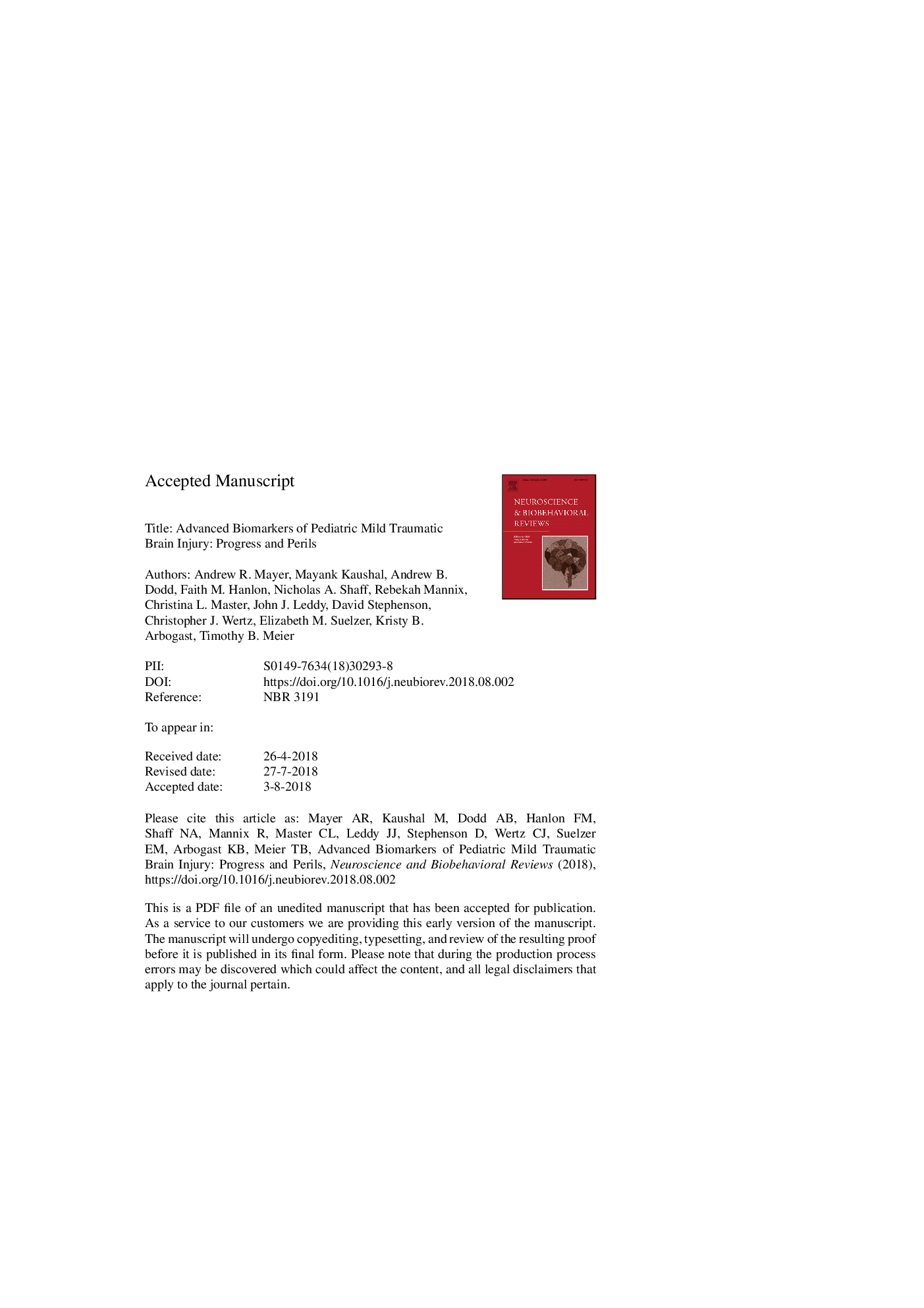| Article ID | Journal | Published Year | Pages | File Type |
|---|---|---|---|---|
| 10134448 | Neuroscience & Biobehavioral Reviews | 2018 | 83 Pages |
Abstract
There is growing public concern about neurodegenerative changes (e.g., Chronic Traumatic Encephalopathy) that may occur chronically following clinically apparent and clinically silent (i.e., sub-concussive blows) pediatric mild traumatic brain injury (pmTBI). However, there are currently no biomarkers that clinicians can use to objectively diagnose patients or predict those who may struggle to recover. Non-invasive neuroimaging, electrophysiological and neuromodulation biomarkers have promise for providing evidence of the so-called “invisible wounds” of pmTBI. Our systematic review, however, belies that notion, identifying a relative paucity of high-quality, clinically impactful, diagnostic or prognostic biomarker studies in the sub-acute injury phase (36 studies on unique samples in 28âyears), with the majority focusing on adolescent pmTBI. Ultimately, well-powered longitudinal studies with appropriate control groups, as well as standardized and clearly-defined inclusion criteria (time post-injury, injury severity and past history) are needed to truly understand the complex pathophysiology that is hypothesized (i.e., still needs to be determined) to exist during the acute and sub-acute stages of pmTBI and may underlie post-concussive symptoms.
Related Topics
Life Sciences
Neuroscience
Behavioral Neuroscience
Authors
Andrew R. Mayer, Mayank Kaushal, Andrew B. Dodd, Faith M. Hanlon, Nicholas A. Shaff, Rebekah Mannix, Christina L. Master, John J. Leddy, David Stephenson, Christopher J. Wertz, Elizabeth M. Suelzer, Kristy B. Arbogast, Timothy B. Meier,
